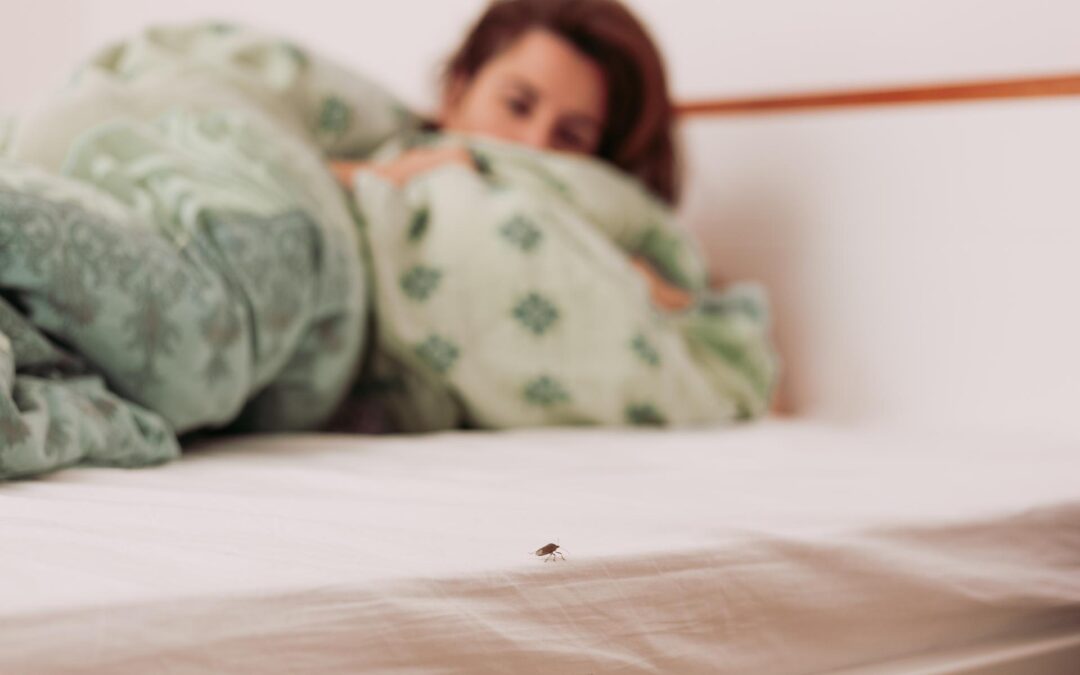Introduction to Bed Bug Challenges in Denver
Denver, with its vibrant neighborhoods and bustling city life, is unfortunately not immune to the challenges posed by bed bugs. Recent reports indicate a rising concern over bed bug infestations in residential and commercial properties throughout the Denver Metro area, including Boulder, Lakewood, Broomfield, Aurora, and surrounding regions. This increasing prevalence underscores the need for awareness and vigilance among homeowners and business owners alike.
Recognizing the symptoms of bed bugs early can prevent the spread of these pests and save considerable discomfort and expense. Early detection is crucial as it allows for timely intervention and reduces the likelihood of a minor issue escalating into a widespread infestation. Educating yourself about the signs of bed bug presence and understanding the steps to take upon discovery are essential first steps in managing this pest challenge effectively.
Identifying Common Bed Bug Symptoms
Being aware of bed bug symptoms is the first line of defense for Denver homeowners against these pervasive pests. Early detection is key, as it allows for quicker and more effective intervention.
Physical Signs of Bed Bugs on Mattresses and Furniture
Bed bugs leave several telltale signs on mattresses and furnishings. Look for small, rusty spots of blood on sheets, mattresses, and bed clothes, which occur when a bed bug is crushed post-feeding. Another indicator is their excrement which appears as dark or black spots, often resembling tiny ink dots, scattered on fabric surfaces. Shed skin and eggshells are less noticeable but just as important. These are pale yellow and found near hiding spots. Observing these physical traces often confirms suspicions of an infestation before even spotting the bed bugs themselves.
Typical Health Reactions in Humans, Including Bites and Associated Risks
Bites are the most common symptom associated with bed bugs. These bites often appear as red, itchy welts in a line or a cluster on exposed skin, commonly found on the face, neck, arms, and hands. While the bites themselves can be quite bothersome, the primary concern is the potential for secondary infections caused by scratching. Additionally, though rare, some individuals may experience allergic reactions requiring medical attention. It’s imperative to recognize these health reactions early to address bed bug problems before they escalate.
Professional Treatments for Bed Bug Extermination
When battling bed bug infestations in the Denver Metro area, residents have access to professional treatments that offer effective solutions to eradicate these pests. Two of the most prominent methods include thermal heat remediation and pesticide applications, both of which cater to the varying needs and circumstances of infested homes and businesses.
Thermal Heat Remediation
Thermal heat remediation is a preferred method for eliminating bed bugs due to its ability to penetrate into the smallest crevices and fabric fibers where bed bugs hide. This method involves raising the temperature of an affected area to a level that is lethal to bed bugs at all stages of their life cycle, including eggs, nymphs, and adults. The advantage of this treatment is its non-toxic nature, making it safe for families and pets, while ensuring a high success rate. Professionals at Thermal Clean, specializing in this technique, operate with precision to ensure that the entire infested area reaches the necessary temperature to provide a comprehensive remedy.
Pesticide Applications
Alongside thermal heat, pesticide applications are often employed as part of a comprehensive bed bug management strategy. These applications involve the use of specific chemicals that are targeted to eliminate bed bugs while being safe for use in residential environments. Combining the immediate effectiveness of chemical treatments with the thoroughness of thermal heat remediation ensures that infestations are addressed both in the short term and long term. It’s essential for homeowners to work with experienced professionals who can appropriately assess the situation and use the safest and most effective chemicals available, adhering to local regulations and ensuring that all treatments are performed with utmost care.
Preventative Measures and Tips for Homeowners
Maintaining a bed bug-free home in Denver requires proactive prevention and diligent attention. Here are some actionable tips to help homeowners protect their living spaces from the threat of bed bugs.
Regular Inspection Routines to Detect Early Signs of Bed Bugs
Regular inspections are a critical line of defense against bed bug infestations. Homeowners should inspect all areas where bed bugs are likely to hide, such as mattresses, bed frames, furniture crevices, and carpet edges. Use a flashlight to look for signs of infestation like small blood spots, dark fecal spots, shed skins, and eggshells. It’s also advisable to inspect second-hand furniture or textiles before bringing them into the home.
Recommendations for Maintaining a Bed Bug-Free Environment
To keep your home bed bug-free, maintain a clutter-free environment as this reduces hiding spots for bed bugs. Regular vacuuming of floors, mattresses, and furniture can help remove any potential bed bugs and their eggs. Using protective covers on mattresses and box springs can also block bed bugs from infesting these areas. For additional safety, consider professional preventive treatments if your neighborhood reports frequent bed bug problems. Staying informed about the signs and treatments of bed bugs can significantly reduce the risk of a full-blown infestation.
In conclusion, proactive measures such as regular inspections and maintaining a clean environment are essential in preventing bed bug infestations in Denver homes. Implement these tips and keep your living areas safe and bed bug-free.

